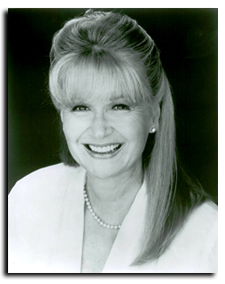![Paldrom_Collins]() I recently had the chance to interview Paldrom Collins about her new book A Couple’s Guide to Sexual Addiction: A Step-by-Step Plan to Rebuild Trust and Restore Intimacy. Below is a copy of our Q&A.
I recently had the chance to interview Paldrom Collins about her new book A Couple’s Guide to Sexual Addiction: A Step-by-Step Plan to Rebuild Trust and Restore Intimacy. Below is a copy of our Q&A.
How can a couple build intimacy after trust has been broken?
Paldrom Collins: Rebuilding a relationship where trust has been broken by an infidelity
driven by sexual compulsivity (and further probably by the cover up of the infidelity), first, and most importantly, the partner who has been sexually compulsive needs to have the desire and willingness to stop the sexually acting-out behavior. If the desire and willingness to stop sexually acting out is not in place, then there is no basis from which to begin.
Secondly, the partner who has been betrayed needs to have the desire and willingness to go through the process of investigation with her partner. She has to have some desire to attempt to rebuild the relationship. She may not be certain of the ultimate outcome, but she needs to at least be willing to stay in this particular relationship dance.
Finally, both partners need to be willing to begin to look into the dynamics within the relationship system that are not working. When a couple is working with an issue like sexual compulsivity, they may tend to focus on “the problem,” which means that the relationship dynamics might not get the attention that will ultimately help both individuals.
That is why the partner with the issue of sexual compulsivity must take responsibility and make a commitment to working with the addiction. Generally, this means he needs to seek support from a counselor or a group. In addition to that individual attention, the couple can receive support in focusing on the dance of the relationship dynamics. Through this investigation a new level of intimacy can be revealed.
Trusting and being trusted is a part of the equation of love. Intimacy is built on trust and trust is built through truth-telling, by being trust worthy. When trust has been broken, it must be rebuilt by telling the truth, being able to live with your personal discomfort and vulnerability about revealing that truth, and by being able to live with your partner’s reactions.
How can a man get over his fear of intimacy?
Paldrom Collins: First he needs to understand what intimacy is. We speak of intimacy as the capacity to reveal ourselves, as the willingness and desire to be completely real with another.
Revealing our hidden inner influences, being real and undefended, can be tricky because we can only be as true with another as we are undefended with ourselves. To the extent that we allow ourselves to be impacted by our partner, to be more fully aware of our inner workings, we allow ourselves an ever-deepening experience of intimacy. It is a cycle that builds on itself. The willingness to be exposed, to see, builds even greater intimacy both for our own inner workings and with our beloved.
Many of the men that we see here at Compulsion Solutions have never learned that sex can be so much more than simply having an orgasm. They did not have intimacy role-modeled for them. We find that men may be afraid of intimacy, but they also desire it. As humans we long to love and be loved even though many of us may not have a clue about how to do it.
Why did you write A Couple’s Guide to Sexual Addiction?
Paldrom Collins: There are so many couples who are now being impacted by sexual addiction or sexual compulsivity. We have seen hundreds of couples work with this problem and build lives and relationships that are better than they had even imagined was possible. We put together this step-by-step plan based on what we see working with our couples here at Compulsion Solutions. We included exercises and stories so that a couple reading this book could begin to find their way through the difficult task of healing a relationship that has been impacted by sexual addiction.
As a counselor who helps couples and individuals find greater intimacy, what are some common problems you see that hurt relationships and how do you help couples work through those problems?
Paldrom Collins: We see couples who are dealing with some form of infidelity. This, of course, is incredibly harmful to the trust and intimacy in the relationship. Once the partner who was acting out sexually stops that harmful behavior and the partner who was betrayed begins to be able to trust that the acting out has ceased, then we can begin the work of helping the couple find their way to true intimacy. In this way the bad thing that has come into their relationship can be used to open the door to intimacy in a way that might not have been revealed otherwise.
In today’s world, many relationships never attain true intimacy. For many people, the unhappiness they feel about their relationship is similar to having a small pain in the ankle that is not really hurting enough to do something about. Instead, they live with it. However, if the ankle was broken and the pain was excruciating, they would need to address it. Because these relationships have been “broken,” and the problem is being addressed, there is an opportunity to rebuild the relationship in a new way, to attain true intimacy.
By learning how to recognize patterns and habits of shame and blame, by learning how to tell the truth undefendedly, by gaining the capacity to work with strong feelings and emotions, and to re-work hidden influences from the past couples gain the capacity to interact with what we like to call skillful means and loving kindness.
Do you work with men and women differently? If so, how do you work with a male differently than a female on intimacy issues?
Paldrom Collins: In working with the sexual addiction issues, the men generally need a kind of tough love, a mentoring guidance. They need to learn how to re-work the ways they automatically respond to hurt, anger, fear, and shame in compulsive and addictive ways. The women, the partners of the addicts, need to learn how to not take their partner’s problem personally, to not believe that they somehow have caused or can cure their partner’s problem. Once there is some stabilization in the relationship around the sexual acting out, then the work on building intimacy can truly begin. In this work the partners bring their hidden influences from the past into the present.
At times, each partner must leap into new and unknown territory of yielding to the other. This can be a challenge for any of us, both men and women. Surrendering control and taking full responsibility are required. It may seem like a paradox, but the two qualities work hand in hand. Intimacy is built through the capacity to maintain a sense of yourself while at the same time being able to have compassion in an undefended way for your partner’s needs and wants. The capacity to reveal the parts of yourself that feel the most ugly, weak, or vulnerable requires inner strength.
What advice would you have for single people who are trying to attract a partner who will create a strong and intimate relationship?![Couples-Guide-to-Sex-Addiction]()
Paldrom Collins: The truth is we tend to attract precisely the partner we need, the perfect person who will reveal our unseen, as yet unrecognized barriers to intimate relationship. Being in intimate relationship is a master’s program of human interaction. The preparation for that (if it’s possible) is to begin the practice of learning how to be still in the middle of a storm. Any kind of meditative practice will help with that. Secondly, any kind of work that can be done that aids in bringing the unseen, unconscious influences of our naturally impulsive, instinctive protective mechanisms of fear, anger, and pain into view will aid in navigating the relationship path to build a strong and intimate relationship.
The best advice for entering into relationship is to trust yourself. Our loving attractions are a mystery. When they come along, the best you can do is jump on the ride and keep your eyes and heart open as wide as you can.
Any last remarks?
Paldrom Collins: If you are reading this and having a difficulty in your relationship, please know that it is understandable that the capacities of courage, perseverance, faith, and strength are being tested. Please know that many, many people who have found themselves in a difficult relationship have been able to navigate their way to a more loving partnership. This does not mean you are going to reach some idyllic plateau where your relationship will have no difficulties. As it is with the weather, your life and relationship will continue to experience stormy times and those that are beautiful, sunny and loving. Through all this is absolutely possible for you to deepen the love and support between you and your beloved.
*******
Paldrom Catharine Collins is a former Tibetan Buddhist nun and co-author of A Couple’s Guide to Sexual Addiction: A Step-by-Step Plan to Rebuild Trust and Restore Intimacy![]() . Working with her husband and sex addiction expert George Collins at Compulsion Solutions, Paldrom counsels individuals and couples across the country.
. Working with her husband and sex addiction expert George Collins at Compulsion Solutions, Paldrom counsels individuals and couples across the country.
For the past seven years, through her depth of awareness, sensitivity, and her kind and compassionate qualities, she has been integral in helping individuals, couples, and groups find more love, deeper peace and meaning in their lives and closest relationships.
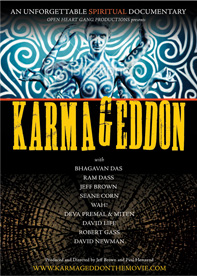 Jeff Brown is a former lawyer turned author (Soulshaping: A Journey of Self-Creation) and filmmaker. His debut film, Karmageddon, is a personal examination of the spiritual journey featuring 1960s counter-culture icon and chanter Bhagavan Das. Bhagavan Das came to fame in the best-selling book “Be Here Now” by Ram Dass, the Harvard professor fired with Timothy Leary for their LSD experiments in the 1960s.
Jeff Brown is a former lawyer turned author (Soulshaping: A Journey of Self-Creation) and filmmaker. His debut film, Karmageddon, is a personal examination of the spiritual journey featuring 1960s counter-culture icon and chanter Bhagavan Das. Bhagavan Das came to fame in the best-selling book “Be Here Now” by Ram Dass, the Harvard professor fired with Timothy Leary for their LSD experiments in the 1960s. 





 This is a guest post written by Allison Foster.
This is a guest post written by Allison Foster.
 continues to touch people’s heart and soul year after year with its message of love. Many movie critics ripped it apart when it was released. But, it is arguably the most successful movie ever made. The director of the film, Frank Capra, believed in the inherent goodness of life and humanity. This was not easy considering his career as a filmmaker took place during the Depression and World War II. His belief that people are basically good inspires hope.
continues to touch people’s heart and soul year after year with its message of love. Many movie critics ripped it apart when it was released. But, it is arguably the most successful movie ever made. The director of the film, Frank Capra, believed in the inherent goodness of life and humanity. This was not easy considering his career as a filmmaker took place during the Depression and World War II. His belief that people are basically good inspires hope.

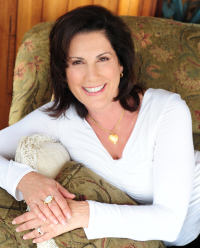 If you’d like to find “the one” (or you already have), and you want to spend the rest of your life blissfully together…
If you’d like to find “the one” (or you already have), and you want to spend the rest of your life blissfully together…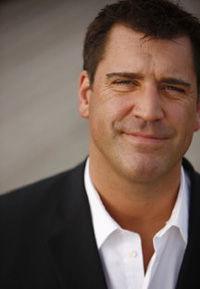
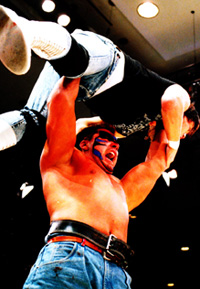






 . Working with her husband and sex addiction expert George Collins at Compulsion Solutions, Paldrom counsels individuals and couples across the country.
. Working with her husband and sex addiction expert George Collins at Compulsion Solutions, Paldrom counsels individuals and couples across the country.
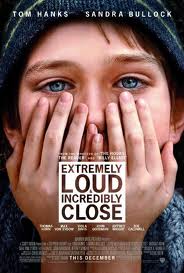

 By Jefferey Cavanaugh
By Jefferey Cavanaugh